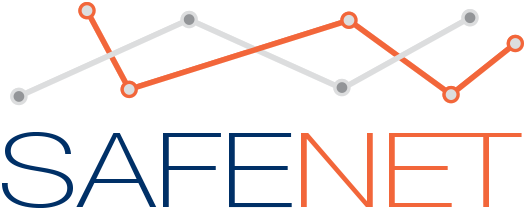cSEED: Systematic Electronic Exchange of Data for Customs Administrations
Background info:
Initial idea for the SEED system was born in May 2008, at the beginning of the EU funded project called EU-SEMS. Creators of the idea (now SafeNet employees) further developed the initial concept, cross-checked it with Beneficiary Administrations wrote design documentation (first version of User Requirements and Functional Specifications) and tested it in practice through two “pilot actions” – bilateral data exchange links.
Thanks to the success of initial testing, European Commission approved additional funding and further development of the SEED system, through the EU-SEED Project.
Description of application:
-
SEED system is enabling systematic and automatic electronic exchange of data from Customs Documents (Transit, Export and Import Customs Declarations, TIR and ATA carnets, Simplified Procedure accompanied document – Invoice, as well as, records about border crossings of empty trucks) amongst Customs Administrations.
SEED system serves for the following purposes:
- To enable sending of pre-arrival data at the moment of beginning of customs procedure in the neighbour country (from the Customs Office of Departure – COoDep), and analysis of pre-arrival data using pre-defined risk criteria. In case some criteria are matched, the system will generate alarms and accordingly inform the authorised officers.
- To verify consistency of declarations submitted in two neighbour Administrations. In other words, to enable automatic matching (comparison) of data from Customs Documents submitted at two neighbour Border Crossing Points (Customs Office of Exit (COoEx) from neighbour country, and home Customs Office of Entry (COoEn)
- To open IT infrastructure of each participating Customs Administration for exchange of messages with ANY external stakeholder from national (business community, other government institutions, etc.) or international level (IRU, EC, etc.), using contemporary standards and technologies which provide reliability and security.
SEED infrastructure could also serve the following purposes:
- Implementation of Safety and Security aspects, including common/shared risk profiles on pre-arrival data;
- Economic Operator recognised as reliable by one Administration, should gain the same status in another Administration. Authorised Economic Operator (AEO) identification numbers should be standardised and reference data created at the Regional level. SEED should announce cross-border movement of the AEO, which should result in speeding-up the Customs formalities at the border, and consequentially facilitate the legitimate trade;
- Data stored in SEED databases could be used for Post Clearance Control purposes;
- Exchange of data related to Intellectual Property Rights (IPR) Infringements and Applications for Action;
- Cross-border exchange of images of the scanner controls;
- Exchange of information about cross-border caring of cash by passengers;
- Exchange of data on VAT (Value Added Tax) refund claims by foreign natural persons at the border;
- Data exchange about railway, river and sea traffic;
SEED system has point-to-multipoint topology, which means that each participating Customs Administration implemented SEED “node” (server running SEED software – “node”) within national IT system, and established bilateral links with neighbouring Administrations;
SEED software (“node”) has two main components:- SEED Application Server, and
- SEED External Communication Node (ECN)
SEED Application Server comprises the following modules:
- Automatic Data Matching module
- Alarm module
- Database
- Web Application
SEED External Communication Node(ECN) is providing standardised interfaces and opening Customs service for communication with any external stakeholder, on:
- National level: business community, banks, other Government institutions, and other.
- International level: standardised interfaces of the SEED ECN are providing standardised interfaces BA to communicate with SPEED and/or CCN Gateway.
Some important SEED ECN features are:
- Sending/receiving of data in different standardised formats, like XML, EDIFACT, etc.
- Translation/transformation of messages from one format to another, in order to facilitate the communication between the different systems involved in conversation. For example XSLT can be used to transform XML messages to another XML format or to some other format.
- Using different means of communication, like web services (SOAP, REST, RSS), file transfer (SFTP, SCP), email (SMTP), etc.
- Easy and flexible configuration, which means that SEED ECN can be easily customised and extended for other pathways of communication between the systems.
- Reliability and integrity (making sure that the messages are not lost or damaged during the communication, and also making sure that the messages are valid in terms of the required format/standard).
- Efficiency in handling entire traffic without delays.
- Scalability in cases of increased volume of the traffic. The communication capacity can be increased by adding more resources.
- High Availability (Service Continuity). In cases of some hardware failures, the service will not be interrupted.
- Security (identification, authentication, authorization) between the communicating parties.
- Protection from outside attacks and malicious activity.
- Logging of all activities and message traffic, and providing of flexible and graphical statistics (daily/weekly/monthly, specific/aggregated, etc.), searching the logs for auditing purposes and bug tracing.
- Cost effective (does not depend on tools and software that have high prices and licence constraints/limitations). Based on open source software.
Technical Details:
-
SEED application:
- Programming language: C#
- DBMS independent (so far tested with PostgreSQL and Microsoft SQL Server 2005/2008)
- Application Server: Internet Information Services v 6.0 (an later)
- Operating system: Microsoft Windows Server 2003 / Microsoft Windows XP (or later)
Communication module is Open ESB:
- Programming language: JAVA
- Application Server: GlassFish 2.2
- DBMS: In-build database of GlassFish 2.2
- Operating system independent (tested with Microsoft Windows Server 2003 / Microsoft Windows XP (and later)
References:
- Customs Administration of Albania
- Indirect Tax Authority of Bosnia and Herzegovina
- Macedonian Customs Administration
- Customs Administration of Montenegro
- Kosovo Customs Service
- Customs Administration of Serbia



 Bosanski
Bosanski